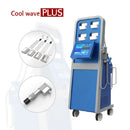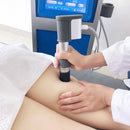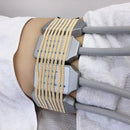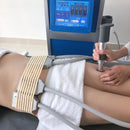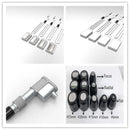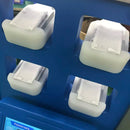Descripción
Cryo plates shockwave machine cryolipolysis cellulite reduce equipment with 4 pcs cryo plates, 1 pcs pneumatic shockwave handle
| Specification | Details |
|---|---|
| Cryo Temperature | 10°C ~ -5°C |
| Screen | 10.4 inch touch screen |
| Cryo Treatment Time | 25–30 min |
| Shockwave Energy | 1–6 Bar |
| Shockwave Frequency | 1–21 Hz |
| Function | Cellulite Reduction, Pain Relief, Physiotherapy |
| Voltage | 110V/220V 50-60Hz |
| Keywords | Cryo Fat Freeze |
| Handles | 5 handles |
| Advantage | Weight loss more effective |
Introduction of NEW 2 IN 1 ShockWave & Cryo fat freeze slimming machine
CRYO Therapy
Cryo therapy gradually dissolves the adipose tissue. Then ,the acoustic shock waves manages to rupture the fibrotic walls of cellulite and, simultaneously, helps to break the adipocyte down thereby making the results quicker, without causing any damage to the surrounding tissues, which are much less sensitive to the effect of the cold.
Shockwave
●Shock wave is defined as a wave with a rapid increase of pressure within a very short time and then having a gradual decrease of pressure with a small negative pressure phase.
●Shock wave is aimed at the affected areas that are the source of chronic pain. The influence of the shock waves, causes to the dissolution of calcium deposits and leads to better vascularization. The after-effect is relief from the pain.

Advantage about NEW 2 IN 1 ShockWave & cryo fat freeze slimming machine

As triglyceride in fats will be converted into solid in particular low temperatures. It uses advanced cooling technology to selectively target fat bulges and dissolve fat cells through a gradual process that does not harm the surrounding tissues, reduce unwanted fat, when fat cells are exposed to precise cooling, they trigger a process of natural removal that gradually reduces the thickness of the fat layer. And The fat cells in the treated area are gently dissolved through the body's normal metabolism process, to dissolve unwanted fat.
Shockwave Functions:
1. Shoulder pain, calcific tendonitis;
2. Radial or ulnar humeral epicondylitis;
3. Trochanteric tendinitis;
4. Waist pain or pygalgia;
5. Patellar tendonitis;
6. Tibial stress syndrome;
7. Achillodynia;
8. Plantar fascitis.
9. fat reduction.







